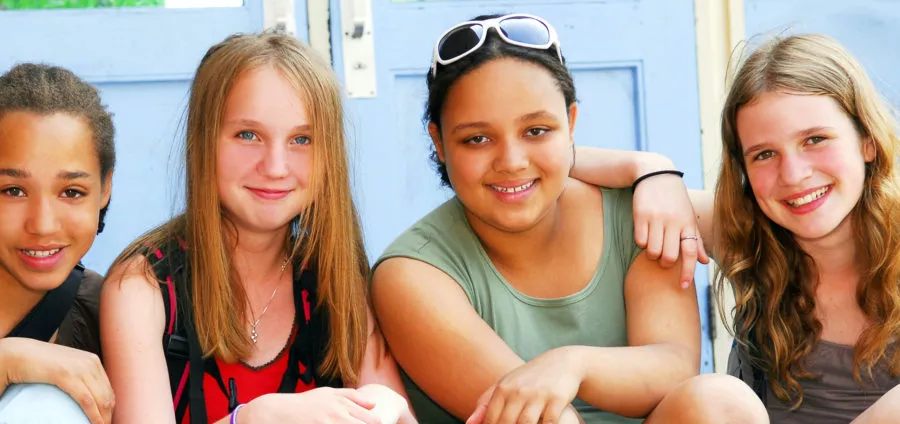With Virginia poised to become the fifth state to require its middle and high schools to provide free tampons and menstrual pads in its bathrooms, the issue of “period poverty” has growing traction in schools and statehouses across the nation. [Editor's note: Virginia Governor Ralph Northam signed the bill into law on April 6, 2020.]
One in five teens said they have struggled to afford period products, or haven’t been able to purchase them at all, according to a national study. As a consequence, 84 percent say they’ve missed school, or know somebody who else who has.
That’s why Delaware high school teacher Kerry Stahl keeps a stash of tampons and menstrual pads—which she pays for herself—in her classroom for students. This way, she says, students can grab one, run to the bathroom, and be back in class in five minutes.
Otherwise, they’d have to trek to the nurse’s office (their school has one, but many don’t), wait for her to triage the sick kids, and possibly miss a whole class. Even worse, some of her students might simply stay home.
“It’s a common sense law,” says Stahl, who is vice president of the Delaware State Education Association (DSEA), about a Delaware bill to require free tampons and pads in Delaware’s middle and high school bathrooms. “Especially in low-income communities, if these things are free and accessible, it could encourage students to come to school.”
With DSEA’s support, Delaware’s bill passed the state house last month. Meanwhile, in Virginia, with support from the Virginia Education Association, its legislation is even closer to becoming law. After sailing through the House of Delegates in early February, the Virginia bill, which requires free menstrual supplies in bathrooms used by fifth- through twelfth-graders, was passed by senators earlier this week by a vote of 39 to 1. If Governor Ralph Northam signs it into law, Virginia will become the fifth state in the U.S. to make sure students have free, easy access to period products.
“It’s a wonderful idea,” says Richmond Community High School teacher Charlotte Hayer, who also is a member of NEA’s Board of Directors. “In places like Richmond, where a good proportion of our families are living below the poverty line, access to those things can be difficult. Parents might be working two jobs and still struggling to provide the basic necessities. In those situations, kids might just stay home.”
Learn Without Disruption
The idea of “menstrual equity," which would make sure all students have what they need has been spreading across the nation in recent years. In recent months, similar bills have been filed in at least seven states beyond Virginia and Delaware, including Washington, Oregon, Colorado, Missouri, Florida, Maryland, and Pennsylvania. In Colorado, where high school students reached out to a state lawmaker for help, the bill is different—it doesn’t require districts to provide free supplies, but creates a fund for district grants. [Editor's update: On February 19, the Washington bill passed the state Senate.]
In 2017, California became the first state to tackle the issue: its law requires free menstrual supplies in at least half the bathrooms at middle and high schools where at least 40 percent of students live in poverty. Illinois and New York followed in 2018 with blanket requirements for all middle and high schools.
Last year, New Hampshire became the fourth state. In signing the Democrat-sponsored bill, Republican Gov. Chris Sununu said the new law would help make sure all students could “learn without disruption—and free of shame and stigma.”
“The movement has taken on a life of its own,” says Nancy Kramer, founder of the non-profit Free The Tampons, and a leader in the successful effort to make menstrual products free—by law—in New York City schools since 2016.
In New York City, it started with a pilot project that showed attendance increased by 2.4 percent at schools with free period products, says Kramer. “When they saw that, they voted to make it citywide, and then the state followed suit. It’s been a little bit of a domino effect.”
In Kramer’s TED Talk, she calls it “restroom equity.” For men, a public bathroom has everything they need to tend to their bodily functions. For women, they often don’t. “As a society, we’re not conditioned to carry toilet paper around us, but we have the expectation that women are going to carry tampons around at all times!”
In fact, 86 percent of adult women have unexpectedly started their period in public without the supplies they need, according to Free The Tampons data. Eight in 10 improvised with toilet paper or something else, and 62 percent went immediately to the store to buy supplies—not an option for most middle- and high-school students. One in three went immediately home.
Delaware’s Stahl also points to a Saint Louis University study published in the journal Obstetrics and Gynecology last year, which surveyed women in St. Louis. Two-thirds told researchers that they were unable to afford menstrual supplies at some point in the previous year, and nearly a quarter said they lacked supplies every month. “They’re using cloths and rags, or toilet paper, or even children’s diapers to get to work or school, and get through their day,” says Stahl. “That’s ridiculous! It staggered me to read!”


